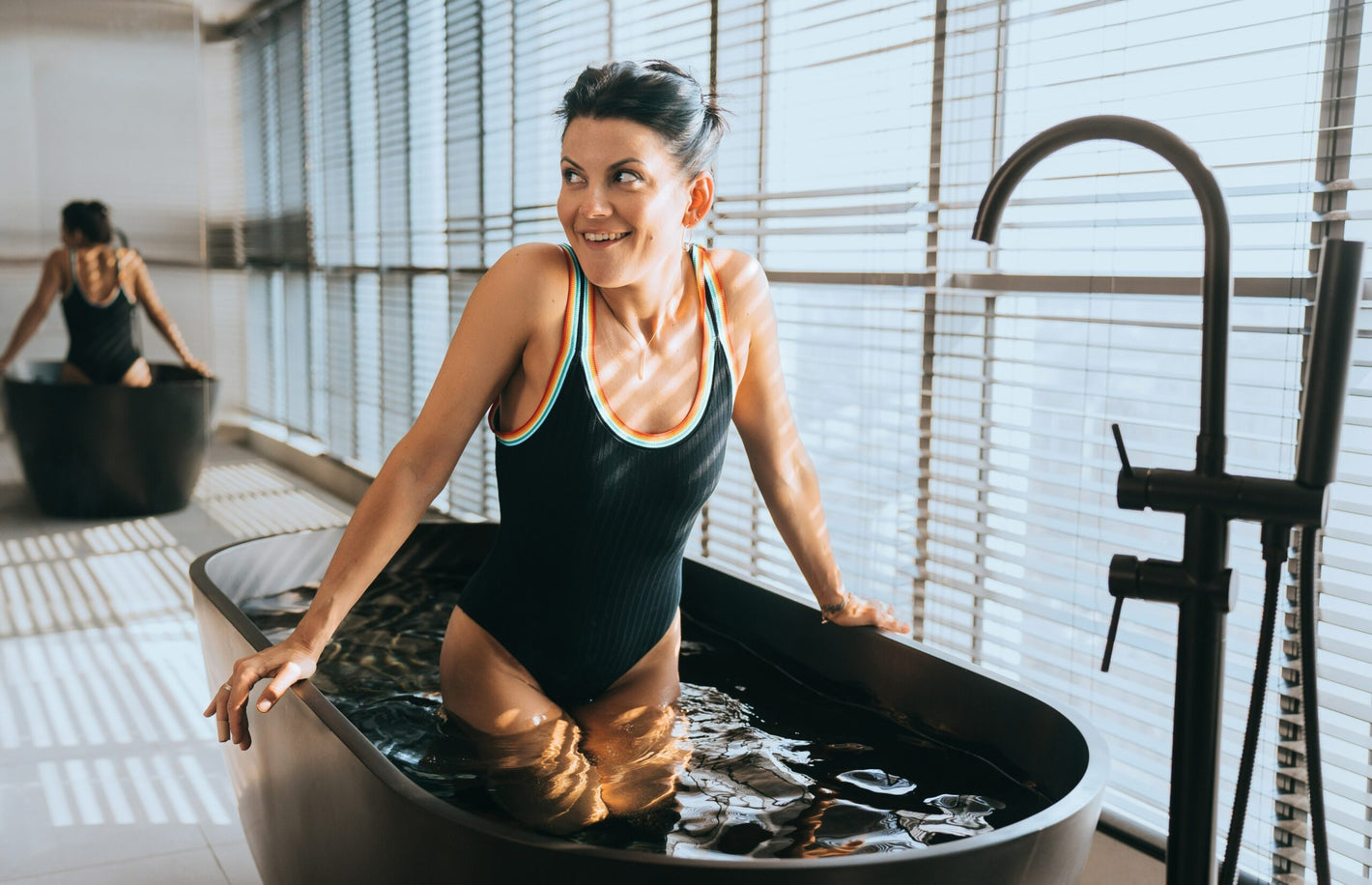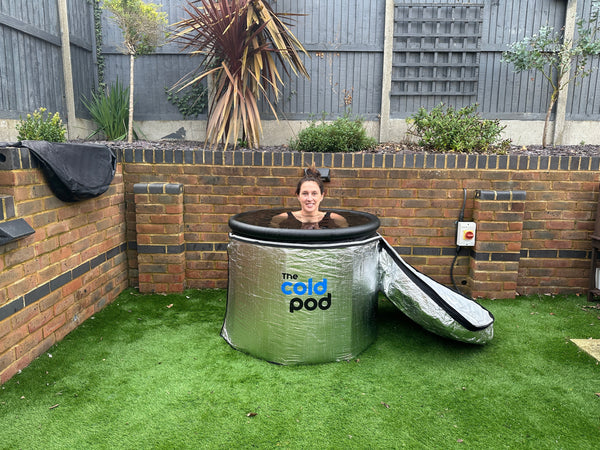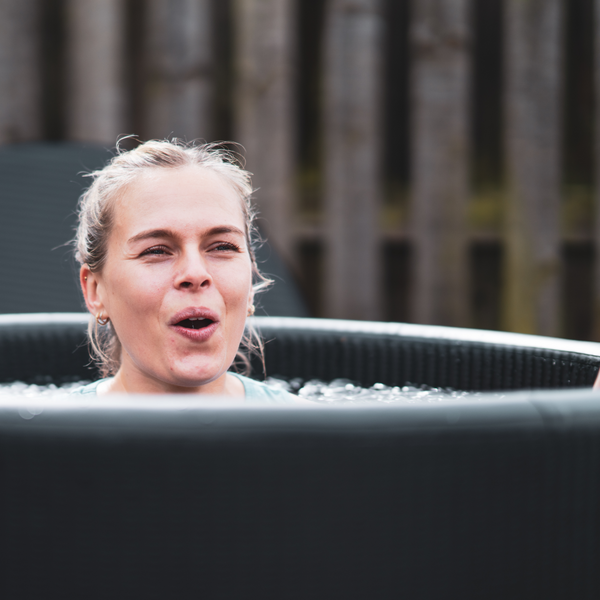Introduction
Do you feel lethargic, achy, or simply worn out? Perhaps you should try some cold therapy! The Cold Pod is making ice baths more accessible than ever thanks to its enormous health and psychological advantages. We’ll discuss the growing popularity of cold therapy and the reasons ice baths are so well-liked in this blog post.
What is Cold Therapy and why is it taking over?
Cold therapy, also known as cryotherapy, is the practise of exposing the body to extreme cold temperatures for a brief period of time to stimulate various health benefits. Ice baths are a popular form of cold therapy where an individual immerses their body in cold water for a period of time, typically 10-15 minutes.
This practise has been used by athletes and fitness enthusiasts for years, but has recently gained more popularity among the general public. So, why is it taking over?
One reason is the growing interest in natural and wellness practises. Cold therapy offers a natural alternative to pharmaceuticals and medical interventions for conditions like pain and inflammation.
Additionally, scientific research has shown that cold therapy can have a wide range of health benefits, such as reducing inflammation, boosting recovery, improving circulation, and enhancing mental health. This has led more people to explore the practise and try it for themselves.
Overall, the trend of cold therapy and ice baths is here to stay as more people discover its benefits and incorporate it into their health and wellness routine.
The Benefits of Cold Therapy and Ice Baths
Cold therapy has become an increasingly popular trend in the world of wellness and fitness with one of the most common forms of cold therapy being ice bathing; the act of sitting in a tub of icy water for several minutes. While it may seem daunting at first, there are numerous benefits to this practice that make it worth considering.
Reducing inflammation in the body is one of the most important advantages of ice baths. Our muscles may ache and swell up when we workout or engage in physical activity. Pain, stiffness, and a reduction in range of motion can result from this inflammation. By tightening blood vessels and lowering muscular swelling, ice baths can aid in the relief of these symptoms. This may result in less discomfort, quicker recovery times, and greater mobility.
Ice baths can lessen inflammation while also enhancing the body’s circulation. Our blood vessels contract when we sit in chilly water and then dilate once more when we come out. Our muscles, organs, and tissues may receive more oxygen thanks to this dilatation and constriction of the blood vessels.
But the benefits of ice baths don’t stop there. Studies have also shown that cold therapy can have mental health benefits. Exposure to cold temperatures has been linked to the release of endorphins and increased dopamine levels, leading to a decrease in feelings of anxiety and depression. Additionally, the experience of taking an ice bath can help you develop mental fortitude and a sense of control over your body, which can translate to other areas of your life.
Overall, the benefits of cold therapy and ice baths are numerous and impressive. From reducing inflammation to improving circulation and enhancing mental health, there are plenty of reasons to consider adding this practice to your routine. And while the idea of taking an ice bath may seem intimidating at first, with the right mindset and approach, it can become an invigorating and rewarding experience.
Mental Health Benefits of Cold Therapy
It’s no secret that cold therapy and ice baths have numerous physical benefits, but did you know that they also have significant mental health benefits? Many people turn to cold therapy as a natural and effective way to manage anxiety and depression.
The shock of cold water can cause your body to release endorphins, which are natural feel-good chemicals that promote happiness and wellbeing. This release of endorphins can create a natural “high,” leaving you feeling relaxed, refreshed, and energised.
Cold therapy also stimulates the vagus nerve, which is responsible for regulating our body’s “rest and digest” response. When we are stressed or anxious, our fight or flight response kicks in, which can cause a number of physical and mental health issues. By stimulating the vagus nerve, cold therapy helps to calm our nervous system, reduce stress and anxiety, and improve our overall mood.
Furthermore, cold therapy has been shown to boost our resilience to stress over time. By regularly exposing ourselves to cold water, we can train our bodies to better manage stress and adapt to challenging situations.
Frequently Asked Questions about Cold Therapy and Ice Baths
As cold therapy and ice baths become more popular, many people have questions about this practise. Below are some of the most frequently asked questions about cold therapy and ice baths.
1. What is the best temperature for an ice bath?
The ideal temperature for an ice bath is between 10 and 15 degrees Celsius. It’s important to start with colder temperatures and work your way up gradually over time.
2. How long should I stay in an ice bath?
Start with 1-2 minutes and work your way up gradually to 5-10 minutes. You don’t want to stay in the ice bath for too long, as this can lead to skin damage or hypothermia.
3. Are ice baths safe for everyone?
No, ice baths are not safe for everyone. People with certain medical conditions, such as Raynaud’s syndrome, should avoid ice baths. It’s always a good idea to consult with your doctor before trying cold therapy.
4. How often should I take ice baths?
It’s recommended to take ice baths no more than 2-3 times per week. Overuse of ice baths can lead to skin damage and decreased effectiveness.
5. Can I use a hot tub or sauna after an ice bath?
Yes, that a great idea, following an ice bath with a hot tub or sauna can also be good at enhancing circulation and relaxation.
6. How can I make the experience more comfortable?
Use a timer to gradually increase the time spent in the ice bath, wear a warm hat, and try breathing exercises to help you relax and stay calm.
Overall, cold therapy and ice baths can provide numerous benefits for physical and mental health. However, it’s important to approach this practice safely and gradually to avoid any adverse effects. If you’re interested in trying ice baths, consult with your doctor and start slowly to maximise the benefits.
How to get started for free
Cold therapy has become a popular way for individuals to improve their health and wellness. Ice baths are a common way to experience the benefits of cold therapy, but they can be expensive or inaccessible for many people. Here are a few ways to get started with cold therapy for free:
- Cold showers: Taking cold showers is an easy and affordable way to experience the benefits of cold therapy. Start by gradually reducing the temperature of your shower until you can handle the coldest setting. Aim to spend 2-3 minutes in the cold water to begin with, gradually increasing the duration over time.
- Natural water sources: If you live near a natural body of cold water, such as a river or lake, you can use this as a free alternative to ice baths. However, be sure to take appropriate safety precautions and check the water temperature before submerging.
Remember to always listen to your body and start slow when trying out cold therapy. Gradually increase the intensity and duration of your cold therapy sessions over time. By getting started for free with these simple techniques, you can experience the benefits of cold therapy without breaking the bank.
Once, you’re ready to take your ice game to the next level getting an ice bath from The Cold Pod is truly a game changer and will help you feel even more energised. As well as being able to offer a better way to decrease the temperature to the desired amount to give you that initial shock.
Conclusion
The cold therapy trend and the popularity of ice baths are on the rise for good reason. The benefits of cold therapy, including reducing inflammation, boosting recovery, improving circulation, and enhancing mental health, are driving more people to incorporate ice baths into their wellness routines. By understanding the basics of cold therapy, preparing properly, and easing into the experience, you can maximise the benefits and minimise discomfort. Remember to listen to your body, go at your own pace, and be consistent with your practice. Whether you start with simple techniques like cold showers or natural water sources or take it to the next level with The Cold Pod, cold therapy can be a transformative practice for your physical and mental well-being. Embrace the cold and enjoy the refreshing and invigorating journey that ice baths offer.







